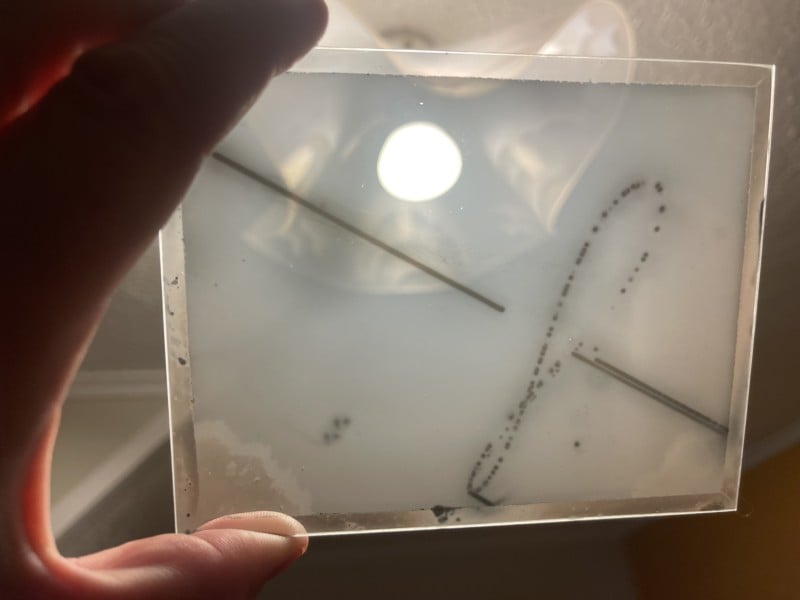Glass Plate Pinhole Camera Records Sun’s Path Over a Year
![]()
Astrophotographer Ian Griffin captured this unusual photo of a solar analemma that charts the Sun’s path over a year using a pinhole camera with a 4×5 glass plate inside.
Analemmas show the position of the Sun in the sky from a fixed location on Earth. The path looks different depending on the camera’s location but it is always a figure eight.
Griffin tells PetaPixel that every day for 12 months, so long as the sun was not obscured by clouds, he would open the pinhole camera’s shutter for 20 seconds at exactly 16:00.
“Inside the camera was a single 4×5 inch glass plate coated with light-sensitive silver halide emulsion,” Griffin explains.
“The plate was a JD Lane ISO 2 plate made by an old school plate maker in the USA.”

Shooting from his home in Portobello, New Zealand, Griffin mounted the camera facing west, and beginning on September 23, 2021, he began the daily routine of opening the shutter for 20 seconds.
“At the winter solstice and autumn equinox, I opened the shutter for longer to record the apparent motion of the sun across the sky,” Griffin adds.
Griffin shot every day not knowing for certain whether his solar photo experiment was working and when he ended the project this week he anxiously went into a darkroom to see the results.
“I dismounted the camera and took it to a makeshift darkroom in the laundry. Under red light, I removed the plate popping it into a chemical bath to develop the latent image. After a few minutes, I shouted with delight. My yearlong project to capture the solar analemma was successful,” he says.
“The elongated figure eight curve you can see in this picture is called a solar analemma. The shape of the analemma you see depends on your location, the tilt of our planet’s axis, and Earth’s varying speed around the Sun.”
Griffin believes that very few analemma pictures are taken from the southern hemispheres and ones taken on an antiqued photographic plate are even rarer.
The Sun’s analemmas is not the only one that can be captured, other planets have them too, notes SpaceWeather.
Not all are figure-of-eights either, the shape depends on the tilt of the planet’s spin axis and the eccentricity of its orbit around the sun, therefore different planets create different shapes. Martian analemmas, for example, resemble a teardrop, while Jupiter’s is an oval shape.
More of Griffin’s work can be found on his Instagram and Substack.
Image credits: All photos by Ian Griffin.